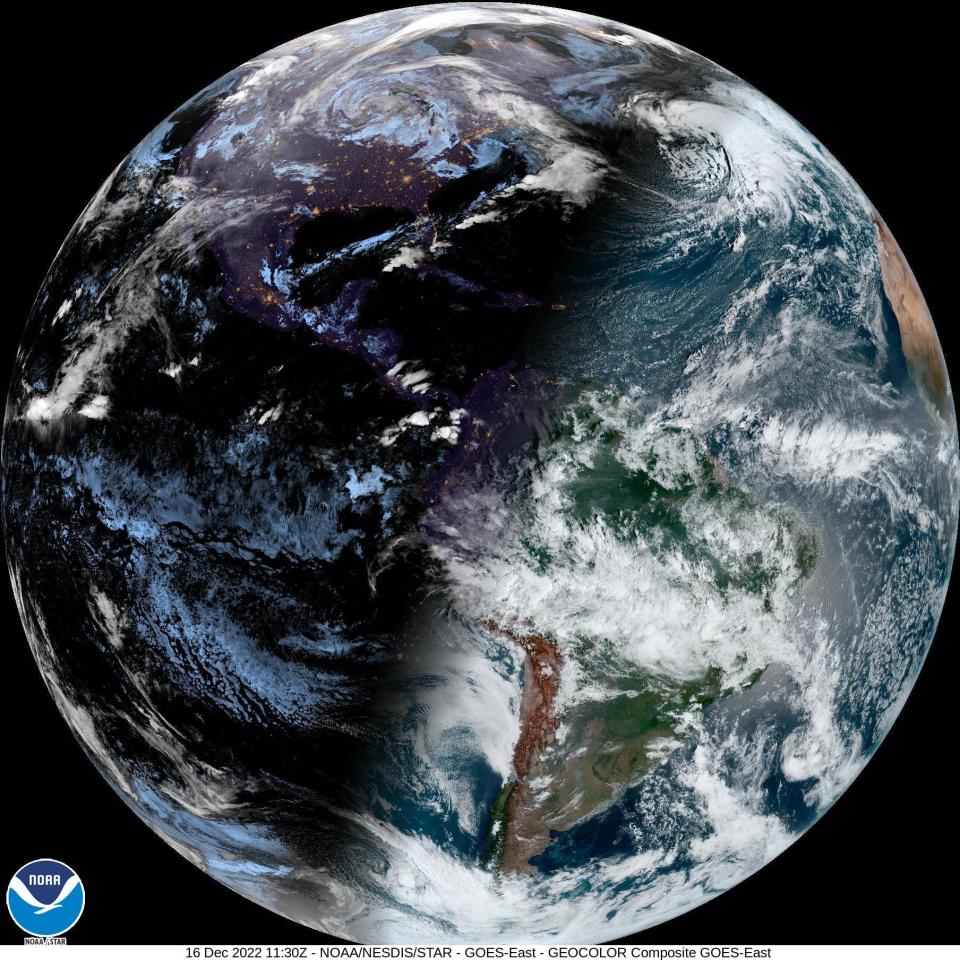Winter solstice 2022 is here: What it means, how to fight the winter blues
Winter is coming. Well, at least the astronomical winter is coming.
Wednesday, Dec. 21, marks this year's winter solstice, the shortest day of the year and the start of the astronomical winter season. While we usually think of winter solstice as an entire day, it actually refers to the moment when the Northern Hemisphere is tilted at its maximum point away from the sun. This year, the winter solstice is at 4:48 p.m.
Michiganders have probably begrudgingly accepted that winter is upon us, and has been for weeks; they're not wrong. The meteorological season, which is based on annual temperature cycles, started at the beginning of the month. Astronomical seasons, on the other hand, are based on the Earth's position as it rotates around the sun.

What is winter solstice?
The winter solstice is the day with the fewest hours of daylight in the whole year, which is why it's typically referred to as the shortest day of the year. The word "solstice" comes from Latin sol, "sun," and sistere, "to stand still," translating loosely to "sun stand still" because on the days preceding and following the solstice the sun's path across the sky seems still, according to The Old Farmer's Almanac.
For us in the Northern Hemisphere, the sun's path is at its most southern point in the sky on this day, so the sun's path is as low in the sky as it can get. This also means your shadow will be the longest it has been all year on Wednesday.
After Wednesday's solstice, the sun's path begins to move northward — and the days thankfully get longer — until it reaches its most northern point at the summer solstice.
More:Winter storm to hit southeast Michigan just before Christmas: What to know
How to protect your mental health
For a lot of us, winter also marks the roughest time of the year emotionally. And don't be fooled by the cutesy nickname; the winter blues pack a mean punch.
The winter months leave many feeling low due to a combination of decreased sunlight and social isolation because of the cold, leading to insufficient vitamin D, serotonin and melatonin levels. These insuffiencies can then further exacerbate depression and other mood disorders, including seasonal affective disorder, according to Psychology Today.
To help you soften the emotional and mental lows, here are some tips from Psychology Today:
Increase your vitamin D levels — Take vitamin D and omega 3 fatty acids. Get outside every day, even if the temperatures are cold.
Exercise — Increasing your heart rate for 20 minutes three times per week can boost endorphins and combat low mood.
Access social support — Make plans and maintain a social schedule to make sure you are receiving emotional and relational support and connection, and simply having fun.
Create a structure for your day — Have a morning routine. Take breaks for self-care and social support.
And while braving the cold requires a Herculean effort, better — sunnier — days are ahead; every day from the winter solstice until June gets a little bit longer.
mmarini@freepress.com
This article originally appeared on Detroit Free Press: Winter solstice: What it means, how to fight the winter blues

